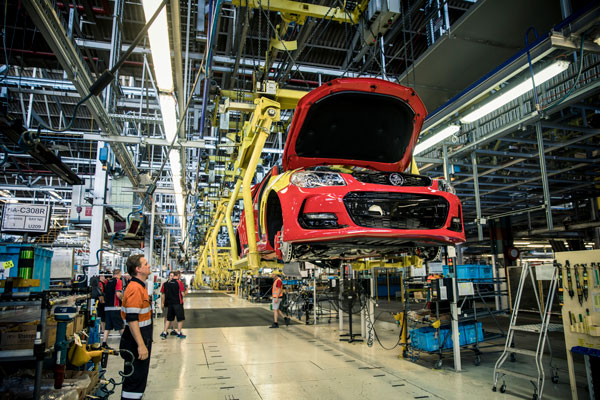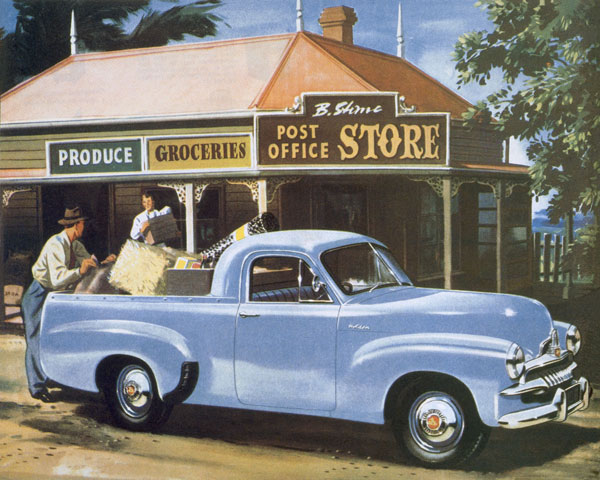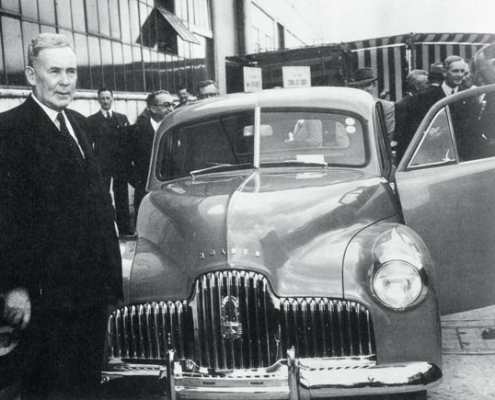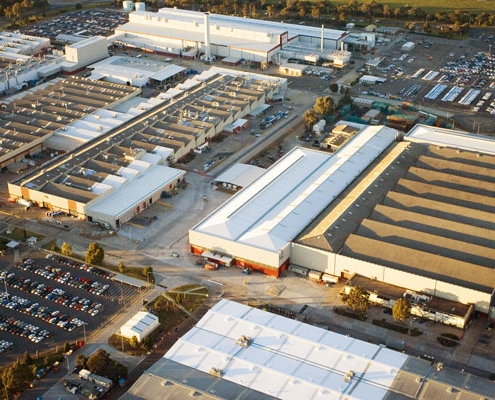End of an Era
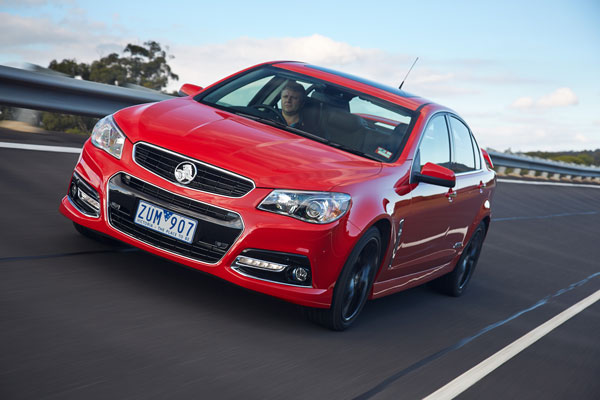
Holden, the iconic Australian automotive brand that has been a fixture on our roads for more than 70 years, is no more.
With a swing of a giant corporate axe all the way from Detroit, General Motors (GM), Holden’s parent company, announced on Feb 17 that the brand will be ‘retired from sales in Australia and New Zealand and local design and engineering operations will wind down by 2021’.
A stream of company heavyweights made statements outlining GM’s reasons behind the decision.
“Through its proud 160-year history, Holden has not only made cars, it has been a powerful driver of the industrialisation and advancement of Australia and New Zealand,” said Julian Blissett, GM International Operations Senior Vice President.
“Over recent years, as the industry underwent significant change globally and locally, we implemented a number of alternative strategies to try to sustain and improve the business, together with the local team.
“After comprehensive assessment, we regret that we could not prioritise the investment required for Holden to be successful for the long term in Australia and New Zealand, over all other considerations we have globally.”
GM added that it undertook a detailed analysis of the investment required for Holden to be competitive beyond the current generation of products and that factors impacting the business case for further investment included the highly fragmented right-hand-drive markets, the economics to support growing the brand, and delivering an appropriate return on investment. The company also stated it intends to focus its growth strategy in Australia and New Zealand on the speciality vehicles business and plans to work on developing these plans.
GM Holden Interim Chairman and Managing Director Kristian Aquilina said it was critical the company worked with all stakeholders to deliver a dignified and respectful wind-down.
“Unfortunately, all the hard work and talent of the Holden family, the support of our parent company GM and the passion of our loyal supporters have not been enough to overcome our challenges,” he said.
“We understand the impact of this decision on our people, our customers, our dealers and our partners – and will work closely with all stakeholders to deliver a dignified and respectful transition.”
Heading further up the food chain, the big kahuna at GM, Chairman and CEO Mary Barra, said in a statement that: “I’ve often said that we will do the right thing, even when it’s hard, and this is one of those times. We are restructuring our international operations, focusing on markets where we have the right strategies to drive robust returns, and prioritising global investments that will drive growth in the future of mobility, especially in the areas of EVs and AVs.
“While these actions support our global strategy, we understand that they impact people who have contributed so much to our company. We will support our people, our customers and our partners, to ensure an orderly and respectful transition in the impacted markets.”
It interesting to note that just a few weeks after making this statement, Barra was announcing GM’s big leap at the EV market, unveiling the company’s new modular EV platform and battery system (read more about that on page 44).
Anyway, there we go. Holden, a national icon, with a history that stretches all the way back to 1856 and the establishment of the J.A. Holden & Co saddlery company in Adelaide, is all but gone. An industry in transition, a perilous fall in demand for its products, the need of a parent company to deliver ‘robust returns’ and focus its attention on new technology, and a host of other reasons, means a brand that was once the pride of a nation now has one foot in the grave. A flurry of carefully worded and suitably sombre-sounding statements from senior executives can’t really disguise the cold truth that someone looked at the numbers and saw Holden was a business GM could do without.
Not that Australia is alone in this.
GM has been making restructuring moves globally for some time. For example, in 2017, the company offloaded its struggling UK and German brands Vauxhall and Opel to France’s PSA Group (the makers of Peugeot and Citroen).
Vauxhall and Opel can be compared to Holden. Vauxhall’s history reaches back to 1857 and it began making cars in 1903. It was acquired by GM in 1925. Opel can trace its roots to 1862. It began making cars in 1899 and GM bought the business in 1931. Both companies are seen as foundation players in their respective nations’ automotive history – much like Holden.
However, while Holden is just the latest GM subsidiary to be jettisoned, unlike those European companies it is not being sold and it feels deeply shocking that this famous brand – as much a part of Australian culture as ‘football, meat pies and kangaroos’ as the old advert proclaimed, and that at one time accounted for one in every two cars on the road – should be no more.
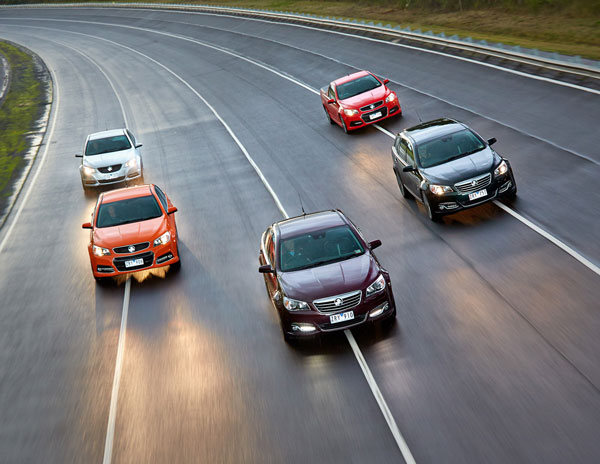
THE DOWNWARD SLIDE
Perhaps, given what GM has been doing elsewhere and the fact that Holden has been struggling for years, what has happened isn’t wholly surprising. Indeed, following a steady stream of grim news over the years, this result has felt something like a ‘death by a thousand cuts’.
Perhaps the deepest of those cuts came in 2013 when it was announced Holden would end the manufacturing of cars and engines by 2017. When that announcement was made, Holden had just recorded a loss (unfortunately, something it was doing regularly) of $152.8 million.
The Coalition government of the time, led by Prime Minister Tony Abbott, was considering withdrawing at least some of the funding it had been providing to the industry and it was reported that Holden had received something in the region of $2 billion in government assistance over the previous decade or so.
“There is not going to be any extra money over and above the generous support the taxpayers have been giving the motor industry for a long time,” said Mr Abbott just a few days before Holden’s manufacturing announcement.
When the announcement did finally drop, then GM Holden Managing Director Mike Devereux said: “GM remains committed to the automotive industry in Australia and New Zealand . . . GM Holden will remain an integral part of its communities and an important employer both directly and through our dealers.”
Remaining an ‘integral part’ lasted just seven years, and when the end came, it came quickly.
In an Australian new vehicle market that saw consistently falling sales through 2018 and 2019, Holden had a particularly torrid time. Sales in 2019 were down 7.8 per cent across the board on 2018. However, for Holden, the sale of 43,176 units in 2019 marked a 28.9 per cent drop on 2018. The company’s 2018 sales figure of 60,751 vehicles was an eye-watering 32 per cent down on 2017.
The headline amongst these bad numbers was the demise of the once mighty Commodore. Such was the fall in favour of the big sedan that the car that had once been the company’s shining star – from 1996 to 2010 it was Australia’s best seller – could muster fewer than 6000 sales in 2019.
At the beginning of December last year, Holden’s Chairman, David Buttner – who had been in the job less than two years – stepped down and Kristian Aquilina took his place as interim boss. A few days later, the company announced the Commodore news and that it would modify its portfolio to dedicate itself exclusively to SUVs and light commercial vehicles.
The termination of the Commodore must have left even the most optimistic Holden enthusiast with the feeling that the writing was on the wall.
“The decision to retire the Commodore nameplate has not been taken lightly by those who understand and acknowledge its proud heritage,” said Aquilina in a statement. “The large sedan was the cornerstone of Australian and New Zealand roads for decades. But now with more choice than ever before, customers are displaying a strong preference for the high driving position, functionality and versatility of SUVs and Utes.
“The SUV segment is approaching half-a-million units, and LCVs over 200,000 units. That’s where the action is and that’s where we are going to play.”
SHOCK TO THE SYSTEM
Aquilina’s statement from December betrayed no knowledge of the imminent brand termination and GM’s Julian Blissett seemed to confirm that the decision was a surprise to Holden when, at a press conference on February 17, he said: “We have just informed our employees and our dealer partners and I can confirm to you that GM has taken the very difficult decision to wind down Holden operations in Australia and NZ by 2021.”
‘Just informed’. The news was, then, a shock not only to the public but to most at Holden, the Holden dealership network and, it seems, even the Australian Government. The Minister for Industry, Karen Andrews, certainly seemed unsettled when fronting the media to field questions on the day of the announcement.
“The Australian government will do all that it can to assist the displaced workers to look at other opportunities,” she said. “We will also do all that we can to make sure that Holden is held to account for the promises that it has made, to me personally and to the government, that it will support workers and it will support the dealers who have been affected by this decision.”
Later, she added: “I don’t think it is acceptable for Holden to have made this decision without any consultation with government and without significant advice of that decision. Now, I understand that they need to communicate and consult with their workers but quite frankly this is an unacceptable process that Holden has undertaken . . .”
Prime Minister Scott Morrison seemed equally incensed: “I’m disappointed, but not surprised, and I am angry like I think many Australians would be,” he said at a press conference. “Australian taxpayers put billions into this, into this multinational company, and they let the brand just wither away on their watch.”
MOVING ON
Losing an iconic name such as Holden isn’t pleasant and certainly there has been some anger from the public. However, in the main, it looks like that anger will be shortlived, there will be a collective shrug of the shoulders and people will move on. To many folks, it seems, Holden wasn’t really Holden anymore. The company had made its name on building cars in Australia for Australian conditions and to many, the brand was all but gone when the company closed its factories in 2017.
“I genuinely think that when manufacturing stopped, it was over,” said Russel Soper, a car enthusiast and owner of a 1972 Holden HQ told Motor Trader. “I haven’t been a big fan since and didn’t like the ZB Commodore . . . They lost the plot and are paying that price. I think a lot of people feel that way . . . The company didn’t read the market at all and this has been a long time coming.”

MORE THAN A JUST A BRAND
While Holden as a brand is being ‘retired’, the sales figures, GM’s global moves, a changing industry and a struggling market are only part of the story – the part that explains ‘why’. The unfortunate sting in tales such as these is that employees, direct and indirect, are always cut adrift.
And the number of people affected here is significant – according to its website, Holden has approximately 1000 direct employees staffing not only the national sales business, but a design division, a financial services arm and the Maven car-sharing service. Hundreds will lose their jobs.
Even more significant in terms of employee numbers is the Holden dealership network. There are some 200 Holden dealers across the country (39 in Queensland) with as many as 9000 employees, and what happens to them and their staff is uncertain.
Holden/GM has said that its ‘customers can be assured that the company will honour all warranties and servicing offers made at time of sale’ and ‘will provide servicing and spare parts for at least 10 years, through national aftersales networks in Australia and New Zealand. As required, Holden and its aftersales network will also continue to handle any recalls or safety-related issues if they arise, working with the appropriate governmental agencies.’
The company added that, ‘Holden will work with its dealer network on appropriate transition arrangements, including offering dealers the opportunity to continue as authorised service outlets to support Holden customers.’
Some dealers then will, presumably, carry on in this support role. However, big decisions and hefty investments were made by those same dealers on the understanding that Holden was staying put, and while the situation (at time of publication) is somewhat sketchy, it is clear that dealers are not at all happy with how things are turning out and reports have indicated that offers of compensation from GM have been met with dismay.
In the last week of February, Holden dealers from across the country met in Canberra and secured a meeting with Prime Minister Scott Morrison to discuss the matter. On February 27, it was announced there would be a Senate inquiry into GM’s decision to retire the brand and the ramifications of that decision. Whatever conversations are being had between GM and the dealers, they clearly are not wholly amicable.
“As an industry we were shocked by GM’s decision and the way it was communicated. However, we have been even more shocked by reports from our members on the grossly inadequate compensation on offer,” said James Voortman, CEO of AADA (Australian Automotive Dealer Association).
“The withdrawal of GM from the Australian market leaves around 200 dealerships in the lurch, and up to 9000 workers out of a job.
“Holden Dealers invested significant capital in facilities, stock and equipment. Many signed up to long-term leases. They employed people in their businesses and took on apprentices. All of these decisions were made in good faith based on commitments from Holden that they were in Australia for the long haul.
“This inquiry is crucial as the way in which Holden is allowed to exit Australia will set the benchmark for other offshore car manufacturers considering an exit from the country, a rationalisation of their network or a change in their distribution model.
“The decision of the Senate to review the impacts of GM’s decision is very welcome, particularly as it will also look at the broader context of the Franchising Code and its role in this mess.”
MTA Queensland Group CEO Dr Brett Dale added his voice to industry concerns: “It is critical that GM compensate all Holden dealers fairly and that the precedent set is an appropriate one for Australia’s future. The Senate Inquiry to review the actions of GM is necessary and we welcome the decision. We will provide a written submission and give evidence at a hearing on behalf of our AADA Queensland members.
“MTA Queensland will be working closely with AADA to ensure we are forthright in our advocacy for exit arrangements to be equitable.”
A SILVER LINING FOR OWNERS?
While the outcome for dealers and their businesses is uncertain, for the public and for current Holden owners it is an interesting, and potentially profitable, time.
As dealers look to clear their stock, there are some fantastic deals to be had and some customers have received emails from them indicating discounts as high as $17,000. Very tempting.
For those who already own Australian-built Holdens, the future looks mighty promising. According to classic car auction house Lloyds Auctions, there is going to be a big increase in the value of some models, and the day after the initial brand retirement announcement was made, Lloyds said the value of classic Holdens was projected to have at least doubled.
“We have been flooded with enquiries coming through our Classic Car Division nationwide over the last 24 hours or so with people wanting to buy a Holden, showcasing a surge in demand for the vintage vehicles,” said Brett Mudie, Chief Marketing Officer for Lloyds, in a statement.
“It really shows that the market has responded immediately and is indicating that the market for Holdens will skyrocket as we have seen the interest soar.
“The value of Holden classics has always been strong but the evidence that has come to us in the last day suggests that it is more than likely to create a booming market for them.”
So, if you own a classic Holden, or even one of the last performance VF models, then the dark cloud of Holden’s demise may well have a silver lining.
WHY DID THIS HAPPEN?
Whatever happens in the next few weeks and months, by the end of next year a once great brand will be all but gone.
The list of reasons are many – a small, hyper-competitive environment in which 67 brands are all gunning for the same pool of potential buyers; a government unwilling to invest more taxpayer money in the industry; the company misreading the market; the changing tastes of the Australian public; the need for GM to consolidate and focus its attention on left-hand drive markets and new technology; lack of investment in new models; the loss of interest in a brand that just wasn’t ‘Australian’ anymore . . . it’s a long list and, perhaps, it was the cumulative effect of all of these reasons and more that are the real cause.
But whatever the reason, where we are now is a miserable state of affairs. It’s tough knowing that people’s jobs are once again being lost and it’s sad to see the venerable old Holden brand – a brand so deeply ingrained in the modern Australian cultural experience – disappear.
‘Football, meat pies, kangaroos and ???’.
Who knows what will step up to take Holden’s place.
Source: Motor Trader E-Magazine (March 2020)
11 March 2020




